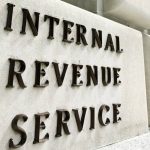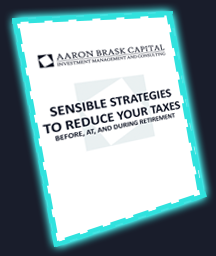Competent portfolio management is a critical element for achieving your financial goals. It is imperative to proactively manage costs, taxes, and risks that could hinder or derail your financial plans. Here are three areas where my analytical background and experience can help. Please use the tabs below to learn more about my investment strategies.
Portfolio Management

Portfolio management data
When it comes to portfolio management, I am a strong advocate of low-cost index funds. Many advisors select funds based on their low fees or historical track records. However, it is also important to understand the mechanics of these funds. Whether you are interested in index funds or active managers, please click below to understand why deeper expertise is critical.
Many advisors use index funds and use their low fees in their marketing. However, it is imperative to conduct due diligence on index products. Each index product follows rules dictating how it selects securities and rebalances its portfolio. I dig deep into the metrics and models each index uses as well as the rebalancing mechanisms.
My research has identified several significant issues with many popular index products. Indeed, many products suffer from subtle performance-dampening issues. In many cases, these issues can impose performance drags that outweigh the fees. Moreover, the increased popularity of index investing has created broader issues related to market efficiency and volatility.
Personalized Index Portfolios
I do my best to mitigate the above issues with existing index products. However, I can also construct and manage personalized index portfolios (e.g, the Conservative Retiree 25 portfolio). These portfolios can provide a higher degree of customization and performance than off-the-shelf funds. Please contact me to learn more about these customized portfolio management services.
Many advisors selecting funds or managers based solely on historical performance. Unfortunately, this exposes their clients to potential bubbles (e.g., tech or housing stocks prior to the collapse of the dot-com and credit bubbles). Moreover, performance data often embeds survivorship bias. This can artificially inflate historical returns for various funds and strategies.
These issues make it critical to assess portfolio management strategies and performance in an objective manner. I evaluate each active investment according to its mandated strategy. My due diligence involves making sure funds have followed their mandates and delivered better performance relative to their benchmarks.
A Higher Bar
Lower-cost index strategies are constantly improving and raising the bar for active mutual funds and portfolio managers. This makes it even more important to monitor and analyze performance. At a bare minimum, active managers should keep up with or outperform their benchmarks net of fees. My process weeds out many of the underperforming managers including closet-indexers (i.e., those active managers who charge higher fees but deviate minimally from their benchmark index). I also monitor the impact of turnover as taxes impose real costs and dampen the returns investors ultimately experience.
More information
You might find the following links helpful:
If you would like to discuss your investment or planning needs, book a free consultation with me using the button below:
Tax Efficiency
 Nobody I know likes paying more taxes. However, I regularly see financial plans and portfolio management strategies with tax efficiency issues. Many investors and professionals fixate on minimizing current taxes, but this can be a dangerous strategy.
Nobody I know likes paying more taxes. However, I regularly see financial plans and portfolio management strategies with tax efficiency issues. Many investors and professionals fixate on minimizing current taxes, but this can be a dangerous strategy.
At a broad level, we can separate taxes into two categories. The first category is income taxes - the one most people are familiar with. The second category is investment-related taxes. These are taxes on dividends, bond interest, rental income, capital gains, etc. In my experience, investors and investment professionals tend to focus on the former, but ignore the latter. My more holistic approach focuses on both and can achieve a greater degree of tax efficiency.
Income Taxes
If you are working or earning money, then you are likely paying taxes on the income you receive. A very common approach to reducing your tax bill is to contribute to retirement accounts. In addition to getting a deduction against your income, the money can grow tax-free for years until you take it out in retirement. At that point, many people are in a lower tax bracket and this works out favorably.
Back-door Roth Conversions
In some cases, high earners may wish to use non-deductible contributions and then convert them to Roth accounts. This is known as the backdoor Roth strategy. If they are likely to remain in higher tax brackets - even through retirement - this approach can lock in current tax rates. Moreover, it can allow them to keep their money in the retirement accounts their entire life. That is, Roth accounts can avoid annoying required minimum distributions (RMDs).
Larger Retirement Account Contributions
In addition to the more common retirement accounts like 401Ks and IRAs, there are other types that allow for larger contributions. For example, contributions to SEP IRAs and personalized defined benefit plans can exceed $50,000 and $200,000 per year, respectively.
The bottom line is that one can manage the timing of their income taxes to a large degree. So it is important to use this flexibility to your advantage.
Investment-related Taxes
I use the phrase investment-related taxes to describe taxes related to dividends, interest, rental income, and capital gains. With these in mind, I believe portfolio management decisions are related to and should be considered in conjunction with income tax planning. However, these issues are not the same and require different strategies to manage them. Below I discuss five key strategies to minimize investment-related taxes:
Exchange-traded funds (ETFs)
For portfolios in taxable accounts, I believe ETFs are essential ingredients. Traditional mutual funds regularly make investors pay taxes on capital gains. However, the mechanics of ETFs allow them to rebalance their portfolios without triggering capital gains for their investors.
Tax harvesting
Another key element of tax-efficient portfolio management is tax loss (or gain!) harvesting. This strategy involves the selling of investments that have declined in value to lock in losses. The idea is to replace these with similar investments right away so the portfolio is not meaningfully changed. However, the loss creates a buffer for taking gains elsewhere in the portfolio.
Asset location
Many investors have different types of investment accounts. Some are taxable (e.g., standard brokerage), tax-deferred (e.g., traditional IRA), and tax-free (e.g., Roth). So it can be helpful to place (or locate) one's investments in particular accounts. For example, bond interest is taxable as income rather than capital gains. So it is often advantageous to place bonds in a traditional IRA account. Moreover, IRA money will eventually be taxed as income. Thus, placing slower-growing investments like bonds in an IRA can help minimize the growth eventually taxed as income. While rules of thumb are useful, mathematical optimization is generally required to get the most out of asset location strategies.
Deferring tax
Bonds and other fixed-income investments are notoriously tax-inefficient. Simple income annuities can reduce or defer many of these taxes for years. These products can produce significant benefits and I have published original research on this topic (optimizing fixed annuity tax deferral). However, please beware of commission-maximizing salesmen who highlight the tax merits of variable and index annuities. The article linked above explains the potential tax issues these products have.
Advanced planning
For investors open to more advanced planning techniques, there are private placement products (e.g., life insurance and variable annuities) that can be structured to reduce taxes. These products have evolved significantly and their prices have become more competitive in recent years. Note: While I conduct due diligence on these products and may recommend them for clients, I am not a broker and cannot transact or receive commissions on these types of products.
More information
If you would like to discuss your investment or planning needs, book a free consultation with me using the button below:

Download my guide for reducing taxes!
Risk Management

In addition to targeting specific goals and objectives, financial planning should also reduce the variability around those outcomes. In particular, it is important to minimize or eliminate threats that could hinder or derail your entire financial plan. That is why risk management is an essential ingredient - whether you are working and saving or already retired.
In some cases, you may choose to self-insure particular risks. In other cases where the stakes are too high, you may simply not be able to afford to take the risks. Below I highlight a few key areas where risk management can be prudent.
Risk Management for Savers
Those who are in their saving and investing phase have different needs. Here are three key areas where the use of insurance as a tool for risk management may be relevant:
- Earnings insurance: When you are working and saving, your future earnings are often your largest asset. Life insurance can help minimize the financial burden on your family in the event of your death. They can also be tailored to decrease coverage over time. This can lower the price and more precisely target the future income at risk.
- Disability: The role of disability insurance is similar to life insurance. Moreover, it can be particularly useful for those whose careers involve a significant amount of physical activity (e.g., doctors and dentists).
- Buy-sell agreements and key-man risk: Businesses with multiple owners often execute agreements to buy each other out under various circumstances (e.g., disability or death). Life insurance can be structured in such a way to seamlessly fund these transactions should the situation arise.
Risk Management for Retirees
For those who are nearing or already in retirement, here are two areas where insurance can be a useful tool for risk management:
- Long-term care: Retirees often get to a point where they can no longer perform everyday activities on their own. Unfortunately, the care they may require can be prohibitively expensive. I can help clients decide between the various solutions to cope with this risk. Purchasing long-term care insurance may not even be necessary. For example, their family may be able to provide the support they need. Moreover, they could also set aside money in reserve or utilize dual-purpose assets (e.g., life insurance). It is important to assess this decision in the broader context of their retirement planning.
- Guaranteed income: Making sure one does not run out of money in retirement is naturally a key consideration. I am an expert at structuring cost- and tax-efficient solutions using income annuities. Please get in touch if you are interested in guaranteed streams of income being a part of your retirement planning.
More information
If you would like to discuss your investment or planning needs, book a free consultation with me using the button below:

